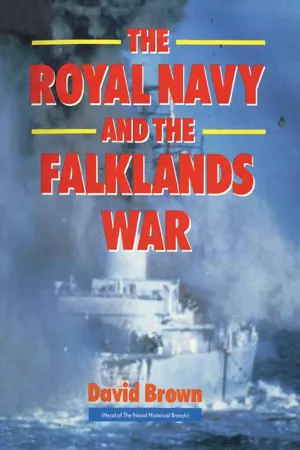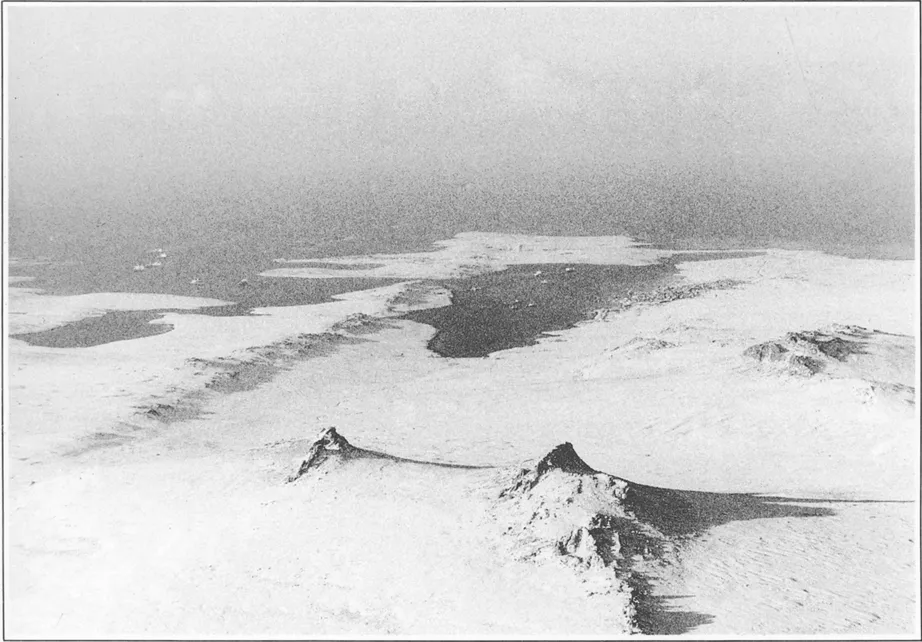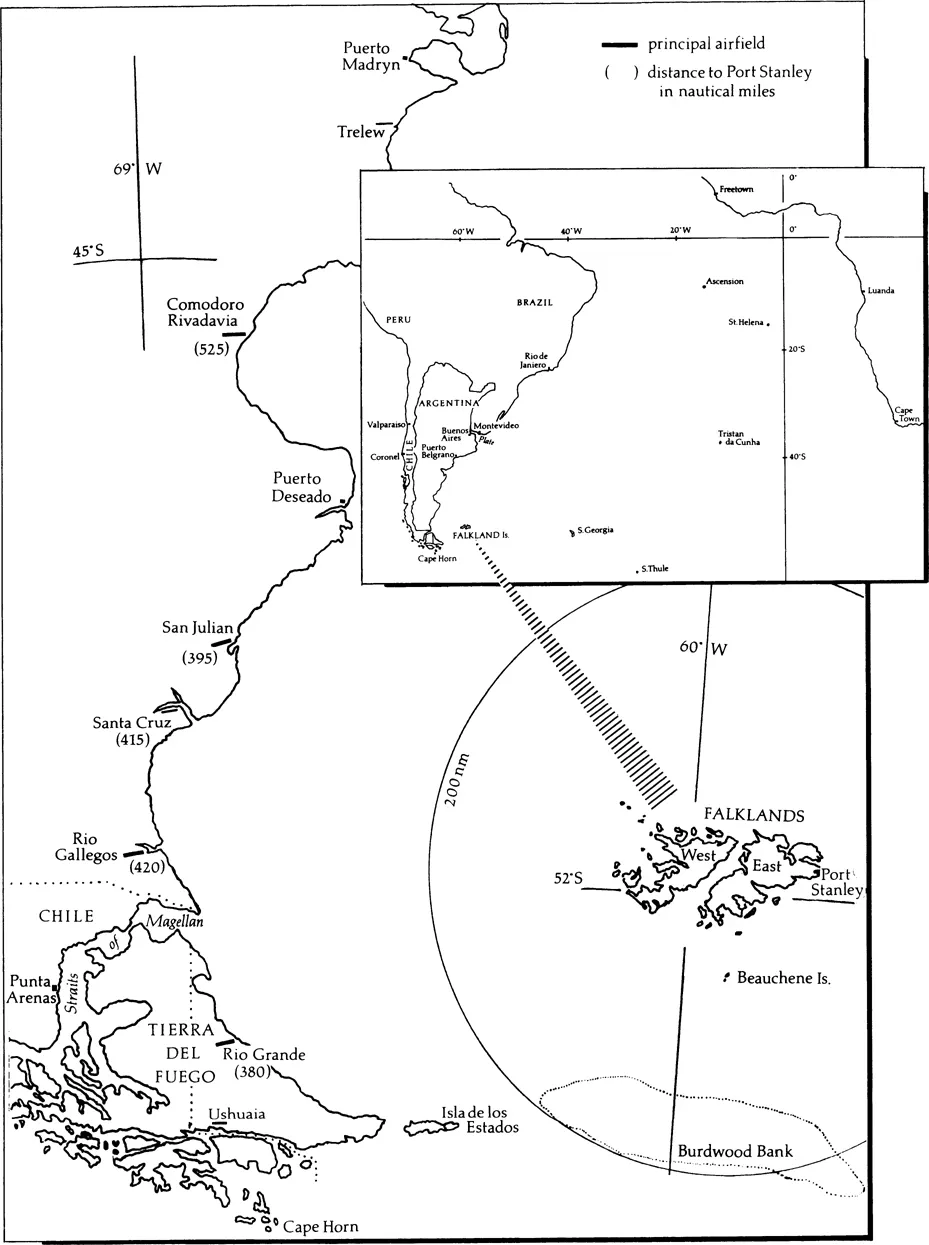
- 384 pages
- English
- ePUB (mobile friendly)
- Available on iOS & Android
eBook - ePub
The Royal Navy and the Falklands War
About this book
This military history reveals the untold story of the United Kingdom's Royal and Merchant Navies during the Falkland's War.
Soldiers and journalists alike wasted no time in memorializing the campaign to recapture the Falkland Islands after the Argentinian invasion in April, 1982. With the overwhelming focus on the role of the Army, the vital contributions of the Royal and Merchant Navies have been largely overlooked. Yet no British military forces would have been there at all had the Royal Navy not provided the necessary transport, not to mention air cover and bombardment support.
In this book, naval historian David Brown tells the extraordinary story of how the fleet was assembled. Merchant-ships ranging from luxury liners such as the SS Canberra to cargo-carriers of every description were quickly converted to their new role as STUFTs, or Ships Taken Up From Trade. Brown describes the stupendous problems presented by the assembling and stowing of the thousands of tons of stores and equipment needed by the Expeditionary Forces and the way in which these problems were solved.
Soldiers and journalists alike wasted no time in memorializing the campaign to recapture the Falkland Islands after the Argentinian invasion in April, 1982. With the overwhelming focus on the role of the Army, the vital contributions of the Royal and Merchant Navies have been largely overlooked. Yet no British military forces would have been there at all had the Royal Navy not provided the necessary transport, not to mention air cover and bombardment support.
In this book, naval historian David Brown tells the extraordinary story of how the fleet was assembled. Merchant-ships ranging from luxury liners such as the SS Canberra to cargo-carriers of every description were quickly converted to their new role as STUFTs, or Ships Taken Up From Trade. Brown describes the stupendous problems presented by the assembling and stowing of the thousands of tons of stores and equipment needed by the Expeditionary Forces and the way in which these problems were solved.
Frequently asked questions
Yes, you can cancel anytime from the Subscription tab in your account settings on the Perlego website. Your subscription will stay active until the end of your current billing period. Learn how to cancel your subscription.
No, books cannot be downloaded as external files, such as PDFs, for use outside of Perlego. However, you can download books within the Perlego app for offline reading on mobile or tablet. Learn more here.
Perlego offers two plans: Essential and Complete
- Essential is ideal for learners and professionals who enjoy exploring a wide range of subjects. Access the Essential Library with 800,000+ trusted titles and best-sellers across business, personal growth, and the humanities. Includes unlimited reading time and Standard Read Aloud voice.
- Complete: Perfect for advanced learners and researchers needing full, unrestricted access. Unlock 1.4M+ books across hundreds of subjects, including academic and specialized titles. The Complete Plan also includes advanced features like Premium Read Aloud and Research Assistant.
We are an online textbook subscription service, where you can get access to an entire online library for less than the price of a single book per month. With over 1 million books across 1000+ topics, we’ve got you covered! Learn more here.
Look out for the read-aloud symbol on your next book to see if you can listen to it. The read-aloud tool reads text aloud for you, highlighting the text as it is being read. You can pause it, speed it up and slow it down. Learn more here.
Yes! You can use the Perlego app on both iOS or Android devices to read anytime, anywhere — even offline. Perfect for commutes or when you’re on the go.
Please note we cannot support devices running on iOS 13 and Android 7 or earlier. Learn more about using the app.
Please note we cannot support devices running on iOS 13 and Android 7 or earlier. Learn more about using the app.
Yes, you can access The Royal Navy and the Falklands War by David Brown in PDF and/or ePUB format, as well as other popular books in History & Latin American & Caribbean History. We have over one million books available in our catalogue for you to explore.
Information

Contents
Introduction
Maps
Glossary
Prologue
PART I
A Convenient Station near Cape Horn
PART II
1 Scrap at South Georgia
2 Operacion ROSARIO
3 The Defence of Grytviken
4 The Task Force Prepares
5 Passage South
6 The Advance Guard
7 Halfway House
PART III
1 The Recapture of South Georgia
2 The Carriers Close In
3 The Argentine Preparations
4 The First Strike
5 ‘Lombardo’s Fork’
6 First Losses
7 Bad-weather Blockade
PART IV
1 ‘D’-Day
2 ‘The Battle of Clapp’s Trap’
3 The Loss of the Atlantic Conveyor
PART V
The Break-out
PART VI
1 The Siege of Stanley
2 Battles in the Mountains
3 The Last Battle
4 Aftermath
STUFT (Ships Taken Up from Trade)
Appendix I
Appendix II
Appendix III
Appendix IV
Equivalent Ranks
Sources
Index

Introduction
This book was conceived as a tribute to all those who took part in and contributed to the success of Operation ‘Corporate’, in particular those of the naval services – the Royal Navy, Royal Fleet Auxiliary, Royal Marine Auxiliary Service, the Merchant Navy, the Queen Alexandra’s Royal Naval Nursing Service and the Royal Marines, as well as all the men of the Army and Royal Air Force who found themselves attached to naval and Marines units. Behind the men ‘at the sharp end’, there were the legions of the staffs and organizations which kept the ships at sea and maintained the Commando Brigade on the far shore – condemned in time of peace as the excessive ‘tail’, in war they showed that they were none too numerous. As might have been expected, British industry provided wholehearted and unstinted support, rising to a new challenge every day, as it seemed, during the two and a half months of active hostilities. With the parts played by the other Services and their contributors, teeth and tail were united to form the body corporate which succeeded in restoring British rule in the Falkland Islands and South Georgia.
Although many might feel that their contribution is not fully reflected in the following pages, only in one area is this intentional. For reasons which they well know, the doings of the submariners must remain discreetly unreported for the time being and it must suffice to say that all those who served in the South Atlantic are in the debt of the men of the six submarines which provided the advanced guard and then the first line of defence against the Argentine Navy. That the Fleet did not venture forth after the example of the General Belgrano does not detract from the dangers and discomforts of long patrols, often in shallow and inadequately charted waters, right up to the time of the Argentine Government’s acceptance that the campaign was over.
I am grateful for the ready assistance and guidance of many officers and men of the Royal Navy and Royal Marines who took part in the various aspects of the campaign. Without their help it would not have been possible to piece together, and in some instances reconcile, the various accounts, semi-official, private and published, British and Argentine, which have been used to compile this narrative. I am also indebted to Admiral Sir Peter Stanford KCB MVO, the Vice Chief of the Naval Staff from 1982 to 1984, and to Mr Alistair Jaffray CB, the Deputy Undersecretary of State for the Royal Navy until 1984, for their permission and encouragement to undertake this work.
David Brown
June, 1984
June, 1984
Although what follows is published by permission of the Ministry of Defence, any opinions which may be expressed are my own and do not represent those of the Ministry, the Navy Department or the Naval Service as a whole.
DB
September, 1986
September, 1986

Maps

View over Two Sisters of the final battlefields, Wireless Ridge to the left, running down to Navy
Point, and the tangled summits of Mount Tumbledown to the right, overlooking Port Stanley
(via Captain S.H.G. Johnston RN)
Point, and the tangled summits of Mount Tumbledown to the right, overlooking Port Stanley
(via Captain S.H.G. Johnston RN)





Glossary
| AAC | Army Air Corps (British) |
| Aden | 30mm aircraft cannon (British) |
| AEW | Airborne Early Warning (radar) |
| Agave | French multi-purpose airborne radar fitted in Super Etendard – associated with AM.39 Exocet missile |
| AIM-9 | Sidewinder air-to-air missile, carried by Sea Harrier (-9G and -9L) and A-4Q Skyhawk (-9B) |
| AOA | Amphibious Operating Area – the land and sea area in the vicinity of the landing beaches and the amphibious shipping anchorage: in practice, San Carlos Water and Port San Carlos and the surrounding hills, together with the northern part of the Falkland Sound outside San Carlos Water. Became the Transport Area from 1 June, 1982 |
| ARA | Armada Republica Argentina: Navy of the Argentine Republic |
| AS.12 | Air-to-surface missile carried by RN Wasp helicopters (see Appendix I) |
| ASW | Anti-Submarine Warfare |
| Avcat | High flash-point kerosene-based aviation fuel used by RN carrier-based turbine-engined aircraft |
| Avgas | Low flash-point aviation gasoline (petrol) |
| BAM | Base Aerea Militar: Military (ie Air Force) Air Base, eg Dr Mariano Moreno (Buenos Aires) Comodoro Rivadavia Condor (Goose Green) El Palomar (Buenos Aires) Malvinas (Port Stanley) Mendoza Reconquista (Santa Fe Province) Rio Gallegos Tandil |
| BAN | Base Aerea Naval: Naval Air Base, eg Bahia Bianca (‘Comandante Espora’) Calderon (or Borbon) (Pebble Is.) Rio Grande (‘Almirante Quijada’) Trelew (‘Almirante Zar’) Ushuaia |
| BAS | British Antarctic Survey – a scientific research organization funded by the British Government to conduct research in the Antarctic and Falkland Islands Dependencies |
| Bergen | Royal Marines Arctic back-pack |
| Blowpipe | man-portable, shoulder-launched surface-to-air missile used by British and Argentine ground forces |
| BMA | Brigade Maintenance Area (British); the military logistic support area, including workshops and medical facilities as well as ammunition, stores, fuel and provisions dumps |
| CAP | Combat Air Patrol: originally a defensive fighter mission but subsequently extended to any air-to-air fighter mission |
| Carl Gustav | 84mm recoilless anti-tank weapon (Swedish-built, used by Royal Marines) |
| Casevac | Casualty Evacuation (usually by helicopter) |
| CdoFAS | Comando de la Fuerza Aerea Sur: Southern Air Command – the Argentine Air Force operational control headquarters based at Comodoro Rivadavia |
| Chaff | Metallic foil, launched by ships or released from aircraft to form radar reflecting clouds to distract or confuse missile homing heads or human operators |
| COMAW | Commodore, Amphibious Warfare (British) |
| ‘Corporate’ | The overall code-name bestowed upon the operation to recover the Falkland Islands. Individual operations within the framework of ‘Corporate’ received separate names |
| Dracone | ‘Sausage-shaped’ flexible towed bulk fuel container; buoyancy provided by the contents, which have a lower specific gravity than water |
| Dieso | Diesel-type light oil fuel burned by RN steam and turbine-engined ships and also usable by Wasp helicopters |
| ECM | Electronic Counter Measures – active anti-radio/radar techniques and tactics, particularly ‘jamming’ of transmissions |
| El... |
Table of contents
- Cover
- Half Title
- Title Page
- Copyright
- Contents